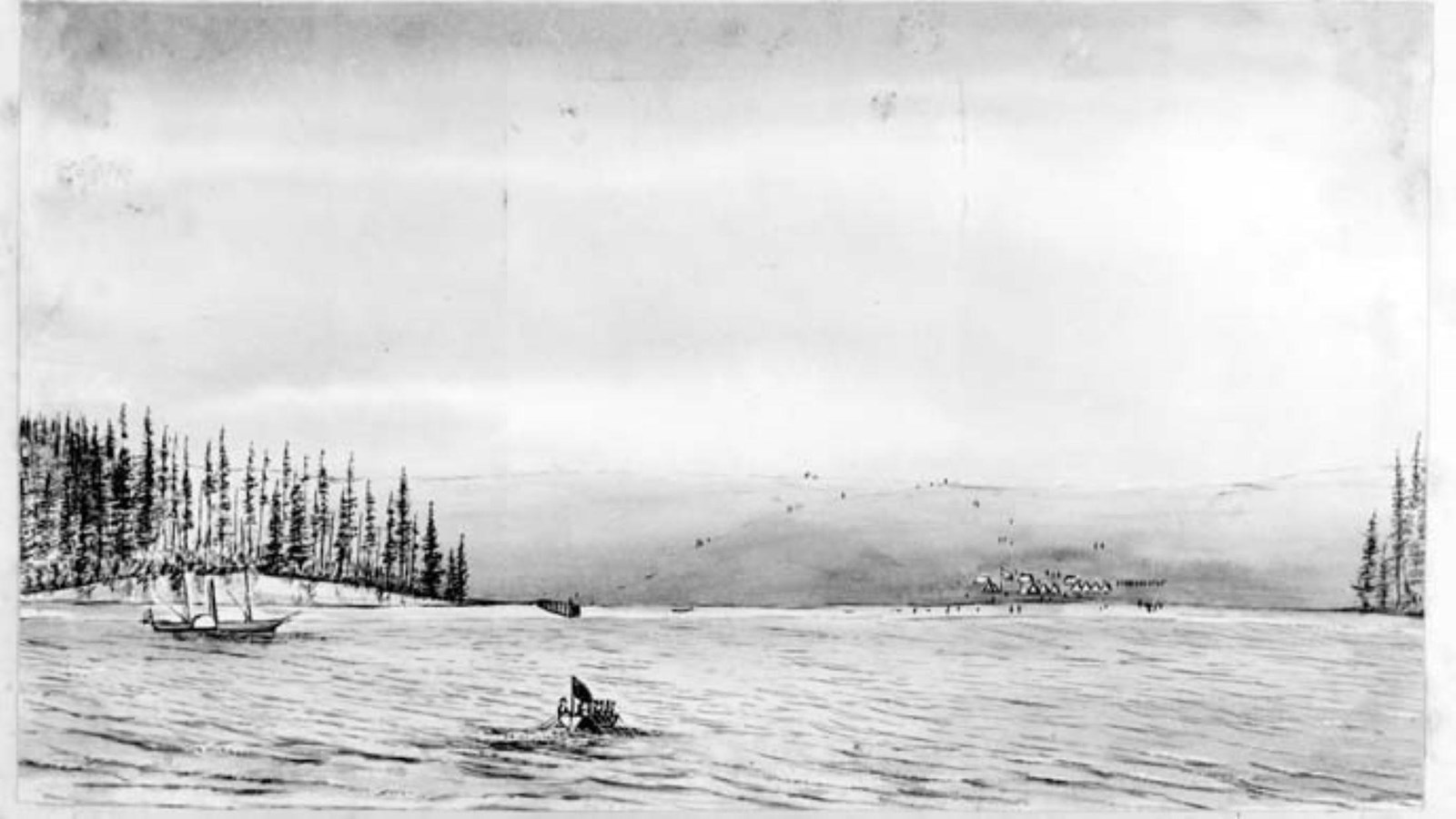Last updated: November 27, 2022
Place
Griffin Bay

Griffin Bay takes its name from Charles Griffin, the Hudson’s Bay Company employee who established the Belle Vue Sheep Farm on San Juan Island in 1853. The company established a dock on Griffin Bay’s relatively tranquil waters near the site of Fourth of July Beach which it used to load and unload cargo from their island-wide sheep farm, which by 1859 hosted more than 4,000 sheep. On July 27, 1859, Captain George Pickett landed 64 soldiers on San Juan Island using the company’s dock, igniting The Pig War.
Two days later, Captain Hornby sailed the HMS Tribune, a 31 gun Royal Navy steam frigate into Griffin Bay to confront Pickett’s forces and strengthen Britain’s claim to the San Juan Islands. Within a week, two more warships with numerous heavy guns and almost 2,000 Royal Marines aboard joined the Tribune in Griffin Bay. The British had more than enough firepower and manpower to easily win a conflict with the United States, but chose restraint over combat. Even as additional American troops arrived on San Juan Island and the Americans began constructing The Redoubt, an earthen fortress designed for combat with the Royal Navy forces, Britain held its fire.
This was a wise and courageous decision. British Columbia Royal Governor, James Douglas, tried to order an invasion of San Juan Island but was overruled by Admiral Lambert Baynes, the highest ranking British naval officer in the Pacific Theater. Baynes' actions allowed American leaders to intervene and countermand the aggressive actions of their field leaders who had almost incited a war on the San Juan Islands. On November 7, 1859, General Winfield Scott, the highest ranking officer in the United States military, successfully negotiated a peace agreement that allowed American and British forces to jointly occupy San Juan Island until an agreement over whose possession it was could be reached. That same day, British naval forces began leaving Griffin Bay, signaling that the tense standoff and near-war had ended.
Shortly after US soldiers landed on San Juan Island in 1859, entrepreneurs, sensing a new market amongst the soldiers, began ferrying over abandoned buildings from defunct mining operations near Bellingham and repurposing them in San Juan Town. Vice-related businesses, such as alcohol sales and prostitution especially flourished in this location during the joint occupation. Proprietors evaded law enforcement by claiming American citizenship when questioned by British authorities and British citizenship in front of American authorities. Authorities only held jurisdiction over citizens of their own nation making this an attractive strategy for lawbreakers on San Juan Island.San Juan Town burnt to the ground in 1890 and left no remains. Today, however, you can walk the tranquil shoreline of Griffin Bay and imagine all the history which happened on its shores and waters.
Two days later, Captain Hornby sailed the HMS Tribune, a 31 gun Royal Navy steam frigate into Griffin Bay to confront Pickett’s forces and strengthen Britain’s claim to the San Juan Islands. Within a week, two more warships with numerous heavy guns and almost 2,000 Royal Marines aboard joined the Tribune in Griffin Bay. The British had more than enough firepower and manpower to easily win a conflict with the United States, but chose restraint over combat. Even as additional American troops arrived on San Juan Island and the Americans began constructing The Redoubt, an earthen fortress designed for combat with the Royal Navy forces, Britain held its fire.
This was a wise and courageous decision. British Columbia Royal Governor, James Douglas, tried to order an invasion of San Juan Island but was overruled by Admiral Lambert Baynes, the highest ranking British naval officer in the Pacific Theater. Baynes' actions allowed American leaders to intervene and countermand the aggressive actions of their field leaders who had almost incited a war on the San Juan Islands. On November 7, 1859, General Winfield Scott, the highest ranking officer in the United States military, successfully negotiated a peace agreement that allowed American and British forces to jointly occupy San Juan Island until an agreement over whose possession it was could be reached. That same day, British naval forces began leaving Griffin Bay, signaling that the tense standoff and near-war had ended.
Shortly after US soldiers landed on San Juan Island in 1859, entrepreneurs, sensing a new market amongst the soldiers, began ferrying over abandoned buildings from defunct mining operations near Bellingham and repurposing them in San Juan Town. Vice-related businesses, such as alcohol sales and prostitution especially flourished in this location during the joint occupation. Proprietors evaded law enforcement by claiming American citizenship when questioned by British authorities and British citizenship in front of American authorities. Authorities only held jurisdiction over citizens of their own nation making this an attractive strategy for lawbreakers on San Juan Island.San Juan Town burnt to the ground in 1890 and left no remains. Today, however, you can walk the tranquil shoreline of Griffin Bay and imagine all the history which happened on its shores and waters.
